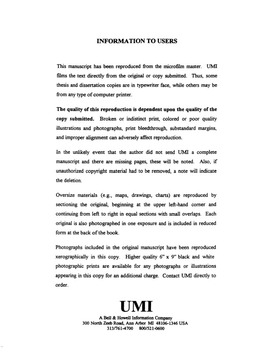| dc.contributor.advisor | Shrock, Dennis, | en_US |
| dc.contributor.author | Caldara, Antonio, 1670-1736. Sacred Music. Selections. | en_US |
| dc.contributor.author | Jones, Linda Beth. | en_US |
| dc.date.accessioned | 2013-08-16T12:30:23Z | |
| dc.date.available | 2013-08-16T12:30:23Z | |
| dc.date.issued | 1998 | en_US |
| dc.identifier.uri | https://hdl.handle.net/11244/5743 | |
| dc.description.abstract | The first chapter provides background information on Caldara's life and important appointments based on the translation of the only known authoritative biography written by Dr. Ursula Kirkendale entitled: Antonio Caldara : sein Leben und seine venezianischromischen Oratorien (Antonio Caldara: His Life and His Venetian-Roman Oratorios). In addition, the three types of sacred works under consideration are identified and discussed. The second chapter presents a comparison of Caldara's Magnificat to Magnificats of his contemporaries. The greater part of this chapter is devoted to a compositional analysis of the three selected works as well as of score discrepancies found between available published editions and Caldara's original manuscripts. The third chapter consists of the following Baroque performance practices, based on primary and secondary sources and related to the three works: sonority, composition and size of performing forces; ornamentation and rhythmic alteration; tempo and meter, variations of amplitude and articulation and phrasing. The fourth chapter is a compilation of conducting details including preparation gestures, subdivided cadences and messa di voce. | en_US |
| dc.description.abstract | Contained in Appendix A are the aforementioned Jones editions of the three Caldara works. Appendix B contains word for word translations of the three Caldara works under consideration. | en_US |
| dc.description.abstract | Very little is known about Antonio Caldara's life and choral works. Also, little has been done regarding performance practice recommendations for works such as those by Caldara in the Baroque era. This document provides choral conductors with knowledge of three little known but artistically high quality works and with performance practice guidelines for their performance. This document also provides conductors with my editions of Caldara's Magnificat in C, (1724) Te Deum and Dies irae based on the original manuscripts and performance practices of the late Baroque in Vienna. | en_US |
| dc.format.extent | xv, 300 leaves : | en_US |
| dc.subject | Church music Instruction and study. | en_US |
| dc.subject | Caldara, Antonio, 1670-1736. | en_US |
| dc.subject | Music. | en_US |
| dc.subject | Biography. | en_US |
| dc.subject | Performance practice (Music) History 17th century. | en_US |
| dc.title | A conductor's guide to three sacred choral/orchestral works by Antonio Caldara: "Magnificat in C", "(1724)Te Deum" and "Dies irae". | en_US |
| dc.type | Thesis | en_US |
| dc.thesis.degree | D.M.A. | en_US |
| dc.thesis.degreeDiscipline | School of Music | en_US |
| dc.note | Major Professor: Dennis Shrock. | en_US |
| dc.note | Source: Dissertation Abstracts International, Volume: 59-12, Section: A, page: 4312. | en_US |
| ou.identifier | (UMI)AAI9914396 | en_US |
| ou.group | Weitzenhoffer Family College of Fine Arts::School of Music | |
